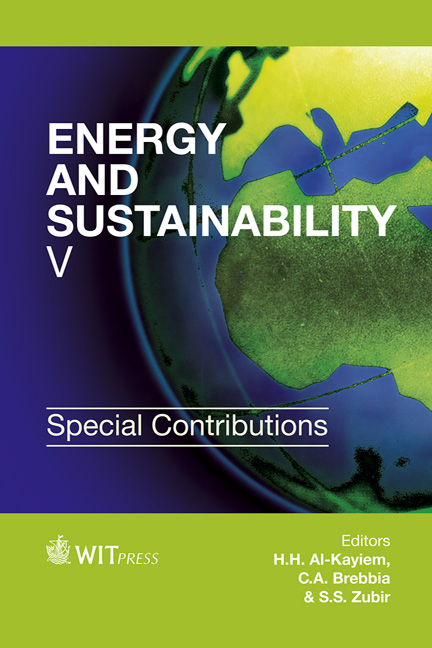Development Of A Briquetting Facility With The Integration Of A Hydraulic System For Biomass Densification
Price
Free (open access)
Transaction
Volume
206
Pages
11
Page Range
335 - 345
Published
2015
Size
545 kb
Paper DOI
10.2495/ESS140301
Copyright
WIT Press
Author(s)
L. M. Gan, H. C. Law, A. B. Rosli
Abstract
Biomass is recognized as a promising source of energy for replacing the utilization of fossil fuels in the near future. As to ensure the availability of biomass for a variety of applications, the challenges in feeding, handling, storing and transporting with the use of biomass wastes in original form must be resolved. Briquetting is one of the densification methods opted to transform the bulky biomass into valuable and manageable products for energy generation. However, the expansion of biomass briquetting depends on the appropriate technologies to accommodate the requirements for briquette formation. As found in recent studies, the existing commercialized briquetting facilities are meant for mass production in industries and there are limitations, making them less compatible with the research purposes. As a result, a small-scaled briquetting facility with reasonable production cost integrating the simple hydraulic working principle had been designed and realized. The hydraulic system would be an additional benefit whereby less effort is required in the operation. On the other hand, the main components in the facility, namely piston and mold, were custom-made. The complete assembly of the facility was then tested using various types of biomass resources, for instance, ground papaya leaves and sawdust. The testing was mostly conducted at a compacting pressure of 300 bars and, hence, resulted in the generation of briquettes resembling a bowl shape. The perfect shape of bowls indicated the effectiveness of the facility.
Keywords
biomass, densification, briquetting, briquetting facility, hydraulic working principle, compacting pressure





